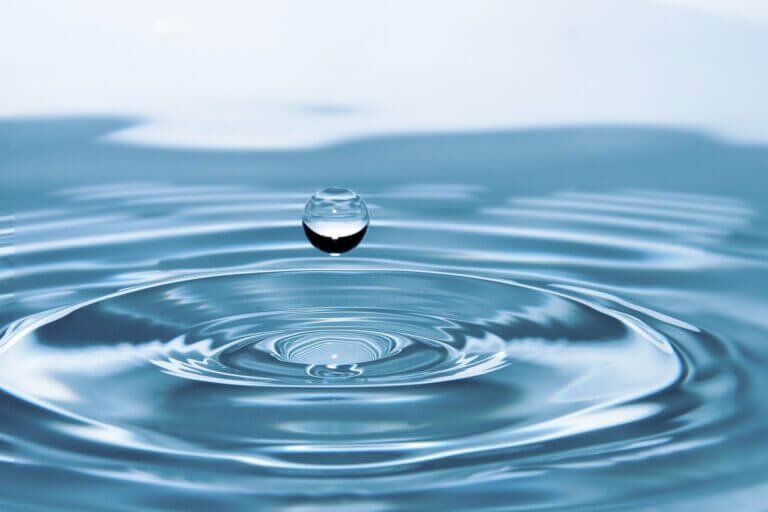Top 5 Common Water-Borne Diseases (Causes & Preventing)
It is essential to have a comprehensive understanding of the different types of water borne diseases, their causes, symptoms, and prevention measures. By increasing awareness and taking proactive steps to prevent the spread of waterborne diseases, we can help protect public health and ensure that everyone has access to safe and clean water.
So, without further ado, let us dive into the basics of water-borne diseases and know…
What Are Waterborne Diseases?
Waterborne diseases are a crucial concern for our health that affects many people worldwide. These deadly diseases are caused by microorganisms and bacteria that are present in contaminated drinking water. Contaminated water is highly unsafe for human consumption. The diseases can cause various symptoms ranging from mild diarrhea and vomiting to infections that can be life-threatening.
The improper treatment and ill filtration practices of filtration of water sources are the main cause of the spread of waterborne diseases. Poor sanitation and hygiene practices are the root sources that supplement water-borne diseases. In the areas where there is a limitation of sanitation facilities of water, there are high chances of finding such diseases. It can impact public health specifically children, pregnant women, and individuals who have weak immune systems.
Proper prevention and control of waterborne diseases are crucial for public health conditions. It requires a multi-faceted approach ranging from ensuring clean drinking water facilities and adequate sanitation facilities to implementing effective water treatment systems. There are several approaches to preventing waterborne diseases. We are going to discuss everything related to waterborne diseases and promoting safe water practices.

What Are the Causes of Water Borne Diseases?
Waterborne diseases are spread by the microorganisms that are present in polluted water. These microorganisms include bacteria, viruses, protozoa, and parasitic worms. They can enter the water supply through different kinds of sources, such as sewage, agricultural runoff, and industrial waste. Some of the most common causes of waterborne diseases include:
Lack of clean water sources
In many parts of the world, access to clean drinking water is limited, and people may have no choice but to drink from contaminated sources.
Poor sanitation
Inadequate sanitation facilities, such as improper conditions of latrines and sewage systems, can contribute to the contamination of water sources.
Environmental factors
Natural disasters such as floods, hurricanes, and earthquakes can disrupt water sources and lead to contamination.
Agricultural practices
The use of fertilizers and pesticides in agriculture can contaminate nearby water sources and underground water.
Industrial waste
Discharge of untreated wastewater and other industrial waste can pollute water sources and lead to the spread of disease.
Poor hygiene
Lack of hand-washing and other hygienic practices can contribute to the spread of waterborne diseases.
Prevention of waterborne diseases involves addressing these underlying causes through measures and prevention techniques. Let us know how can we control waterborne diseases…
How Can We Prevent Waterborne Diseases?
Preventing waterborne diseases involves taking measures to ensure that water sources are clean and safe to drink and that individuals are practicing good hygiene. Here are some key strategies for preventing waterborne diseases:
Access to clean water
Ensure access to clean drinking water through treatment and filtration of water sources. If the systems of clean water are hygienic and looked upon with proper attention, we can access clean water. You can also provide bottled or packaged water.
Proper sanitation
Encourage the use of proper sanitation facilities such as latrines and sewage systems, and ensure that these facilities are properly maintained and regularly cleaned by the authority.
Hygiene practices
Encourage good hygiene practices such as regular hand-washing with soap and water, and the use of clean, safe water for drinking, cooking, bathing, and other work.
Safe food practices
Ensure that food is properly cooked and stored, and that individuals are consuming food and beverages that are prepared using clean water.
Vaccination
Vaccination is available for certain waterborne diseases such as cholera and hepatitis A. If there are high chances of you being prone to the diseases or you come under the category of children, pregnant women, or individuals with weak immune systems, ensure getting the vaccination.
Environmental protection
Protect water sources from contamination through measures such as regulating industrial waste and agricultural runoff. Addressing environmental factors that can lead to water contamination is also crucial.
Education and awareness
Educate individuals and communities about the risks of waterborne diseases and aware them of the importance of taking measures to prevent them.
By taking these measures, we can reduce the incidence of waterborne diseases and improve public health. If the people and the government work together, they can reach great public health goals.
Here Are the Top 5 Common Waterborne Diseases
Cholera
Cholera is a waterborne disease caused by the bacterium Vibrio cholera. It is typically found in contaminated water and food. Cholera is a severe diarrheal disease that can be fatal if left untreated. In areas with poor sanitation and limited access to clean drinking water, it is common to find cholera among the public. A survey tells that is mostly found in developing countries.
Symptoms of cholera include severe diarrhea, vomiting, and dehydration, which can lead to death in severe cases. The incubation period of cholera is typically between 12 hours and 5 days, after which symptoms may appear suddenly. Cholera can be diagnosed with medical consultation. It is tested through laboratory testing of stool samples.
Prevention of cholera involves ensuring access to clean drinking water and promoting good hygiene practices such as hand-washing, and vaccination. The oral cholera vaccine is available and is recommended for individuals traveling to areas with a high risk of cholera. Treatment of cholera involves rehydration therapy, which involves reviving lost fluids and electrolytes through oral rehydration solutions or intravenous fluids. Antibiotics are also used for the cure to shorten the duration of illness and reduce the severity of symptoms.
Typhoid Fever
Typhoid fever is a bacterial infection caused by the bacterium Salmonella typhi. It is typically spread through contaminated water or food. It is founded mostly in areas with poor water conditions.
Symptoms of typhoid fever include a high fever, headache, abdominal pain, and a rash. The incubation period of typhoid fever is typically between 6 and 30 days, after which symptoms may appear gradually. Typhoid fever can be diagnosed through medical supervision.
Prevention of typhoid fever involves ensuring access to clean drinking water and proper sanitation facilities and promoting good hygiene practices such as hand-washing, etc. Two types of vaccines are available for typhoid fever: an injectable vaccine and an oral vaccine. Treatment of typhoid fever involves antibiotics to kill the Salmonella bacteria, and supportive care to manage symptoms and prevent complications.
Typhoid fever can have serious complications, including intestinal perforation, internal bleeding, and inflammation of the heart or brain, and can be fatal if left untreated. However, with prompt diagnosis and treatment, most people recover from typhoid fever without complications.
Hepatitis A
Hepatitis A is a viral infection that affects the liver and is typically spread through polluted food or water. Hepatitis A is found worldwide but just like other diseases, is most common in areas with hygiene practices.
Symptoms of hepatitis A include fatigue, nausea, abdominal pain, and jaundice (yellowing of the skin and eyes). The incubation period of hepatitis A is typically between 15 and 50 days, after which symptoms may appear gradually. Hepatitis A can be diagnosed through laboratory testing of blood samples.
The hepatitis A vaccine is recommended for individuals, as well as for certain high-risk groups, such as healthcare workers and individuals with chronic liver disease.
Treatment of hepatitis A involves supportive care to manage symptoms and prevent complications, as there is no specific treatment to cure the infection. Most people with hepatitis A recover fully within a few weeks or months, and the infection typically does not cause long-term liver damage.
Cryptosporidiosis
Cryptosporidiosis is a parasitic infection caused by the Cryptosporidium parasite, which is found in contaminated water or food, or through contact with infected animals or people.
Symptoms of cryptosporidiosis include diarrhea, abdominal pain, nausea, vomiting, and fever. The incubation period of cryptosporidiosis is typically between 2 and 10 days, after which symptoms may appear suddenly. It is diagnosable through the help of doctors.
Prevention of cryptosporidiosis involves ensuring access to clean drinking water and avoiding contact with infected animals or people. Cryptosporidiosis is highly resistant to disinfectants, so proper filtration and treatment of water sources are essential in preventing the spread of the parasite.
Giardiasis
Giardiasis is a parasitic infection caused by the Giardia lamblia parasite, which is found in contaminated water, or like cryptosporidiosis, through contact with infected animals or people. Giardiasis is found worldwide.
Symptoms of giardiasis include diarrhea, abdominal pain, bloating, gas, and nausea. The incubation period of giardiasis is typically between 1 and 3 weeks, after which symptoms may appear gradually.
It’s prevention practices are similar to cryptosporidiosis. Giardia is highly resistant to disinfectants, so proper filtration and treatment of water sources are essential in preventing the spread of the parasite.
Treatment of giardiasis involves antibiotics to kill the Giardia parasite, as well as supportive care to manage symptoms and prevent complications. Most people with giardiasis recover fully within a few weeks, although the infection can be more severe and long-lasting in individuals with weakened immune systems.
All these diseases can have a significant impact on public health, particularly in areas where access to clean water and sanitation facilities is limited, and in individuals with weakened immune systems. Therefore, their prevention and control are necessary!







